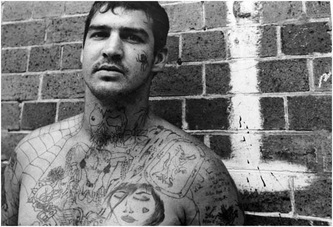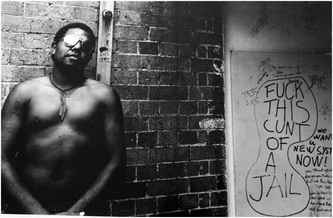Boggo Road Gaol
Boggo Road 1989
The camera’s continuing authority to testify, to function as an eyewitness, is clearly demonstrated in his photographs of incarcerated individuals at the Boggo Road Prison, remembered as one of Australia’s most de-humanizing jails. Although, as Scott McQuire states, `Photographing the “social underbelly” so easily slides into social voyeurism’, this is avoided by Page in the close-ups he takes of the inmates and, importantly, the prior dialogue he has had with them. He negotiates the doubly difficult path of being a “free” citizen and Caucasian, photographing Aboriginal men in a situation where such a power relationship is rarely so acute.
The camera’s continuing authority to testify, to function as an eyewitness, is clearly demonstrated in his photographs of incarcerated individuals at the Boggo Road Prison, remembered as one of Australia’s most de-humanizing jails. Although, as Scott McQuire states, `Photographing the “social underbelly” so easily slides into social voyeurism’, this is avoided by Page in the close-ups he takes of the inmates and, importantly, the prior dialogue he has had with them. He negotiates the doubly difficult path of being a “free” citizen and Caucasian, photographing Aboriginal men in a situation where such a power relationship is rarely so acute.





















